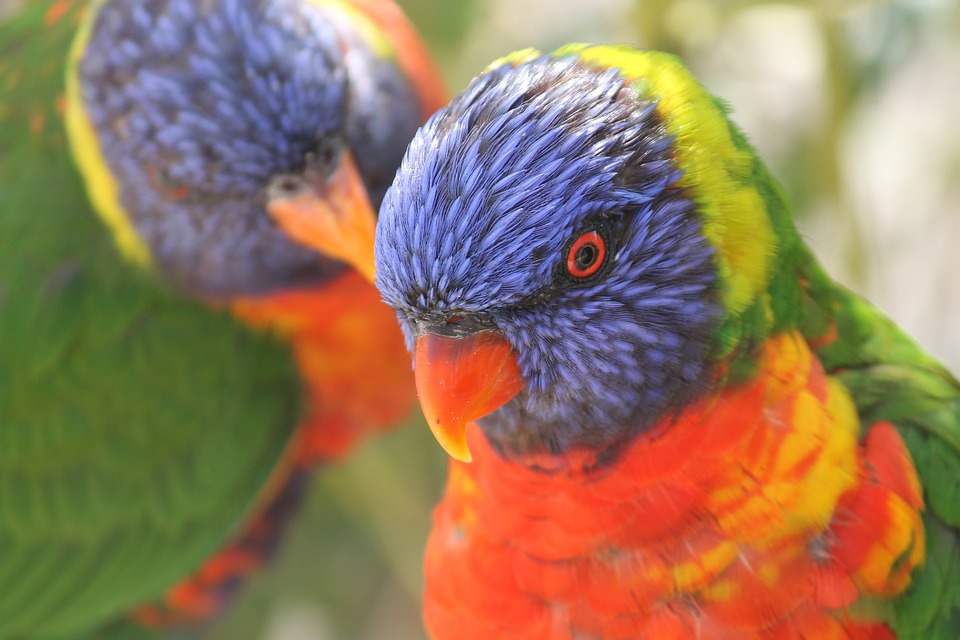Parrots are highly intelligent creatures that require mental stimulation and physical exercise to thrive. Creating a dedicated parrot playground allows them to explore, play, and exercise in a safe and controlled environment outside of their cage. In this article, we will guide you through the steps of creating a parrot playground while ensuring their safety and happiness.
Creating a parrot playground offers numerous benefits for both you and your feathered friend. First and foremost, it provides them with the physical exercise they need to maintain a healthy weight and prevent obesity. A playground offers ample opportunities for climbing, flying short distances, and engaging in physical activities.
Mental stimulation is also crucial for parrots, as they are highly intelligent creatures. A playground filled with toys, puzzles, and interactive elements will keep them mentally sharp and prevent boredom. This mental stimulation is essential for their overall well-being.
Parrots are social animals and enjoy spending time with their human companions. A parrot playground allows you to interact and bond with your parrot while providing opportunities for socialization with other pets or parrots. This social interaction is essential for their emotional and mental health.
Additionally, a well-designed playground provides a variety of textures, colors, and challenges that stimulate your parrot’s senses. This enrichment helps prevent behavioral issues such as feather plucking, excessive screaming, and aggression. A parrot playground is a great way to keep them happy and content.
When designing a parrot playground, there are several aspects to consider to ensure a safe and engaging space for your feathered friend. First, choose a location in your home that offers sufficient space for the playground. Avoid areas with drafts, direct sunlight, or proximity to potential hazards such as open doors or windows.
The size and structure of the playground should be suitable for your parrot’s species and wingspan. Ensure there is enough room for them to hop, fly short distances, and climb comfortably. Incorporate perches, ladders, ropes, and swings to provide different levels and surfaces for exploration.
Include a variety of toys and puzzles that are safe for your parrot to interact with. Opt for toys made from bird-safe materials, such as stainless steel, untreated wood, and natural fibers. Rotate and introduce new toys regularly to keep your parrot engaged.
Parrots enjoy foraging for food in the wild, so incorporate foraging toys, puzzle feeders, and hiding spots to encourage natural foraging behaviors. This will keep your parrot mentally stimulated and prevent boredom.
Safety measures are crucial when creating a parrot playground. Ensure that all materials used are non-toxic and free from small parts that could be ingested. Regularly inspect the playground for any potential hazards, such as loose screws, sharp edges, or frayed ropes. Supervise your parrot during playtime to prevent accidents.
Some frequently asked questions about parrot playgrounds include:
1. How much time should I allow my parrot to spend on the playground?
It’s recommended to allow your parrot a minimum of 1-2 hours of supervised playtime on the playground each day. However, the exact duration depends on your parrot’s species, age, and energy level. Monitor your parrot’s behavior and adjust playtime accordingly.
2. Can I use household items to create toys for my parrot’s playground?
While some household items can be repurposed as toys, it is important to ensure they are bird-safe, durable, and free from any harmful substances. Always supervise your parrot during play to prevent accidents or ingestion of unsafe materials.
3. Should I change the layout of the playground frequently?
Yes, changing the layout and adding new toys or challenges will prevent boredom and keep your parrot engaged. Parrots enjoy exploring new environments, so try to rotate and introduce new elements to the playground regularly.
4. Can I let my parrot play with other pets or parrots on the playground?
Parrots can enjoy socializing with other pets or parrots, but it’s crucial to introduce them gradually and under close supervision. Ensure that all animals are comfortable and show no signs of aggression or stress during interactions.
Creating a parrot playground is a wonderful way to enhance your parrot’s quality of life and promote their overall well-being. By following these guidelines and considering your parrot’s individual needs, you can create a safe and enriching space where your feathered friend can play, explore, and thrive.









